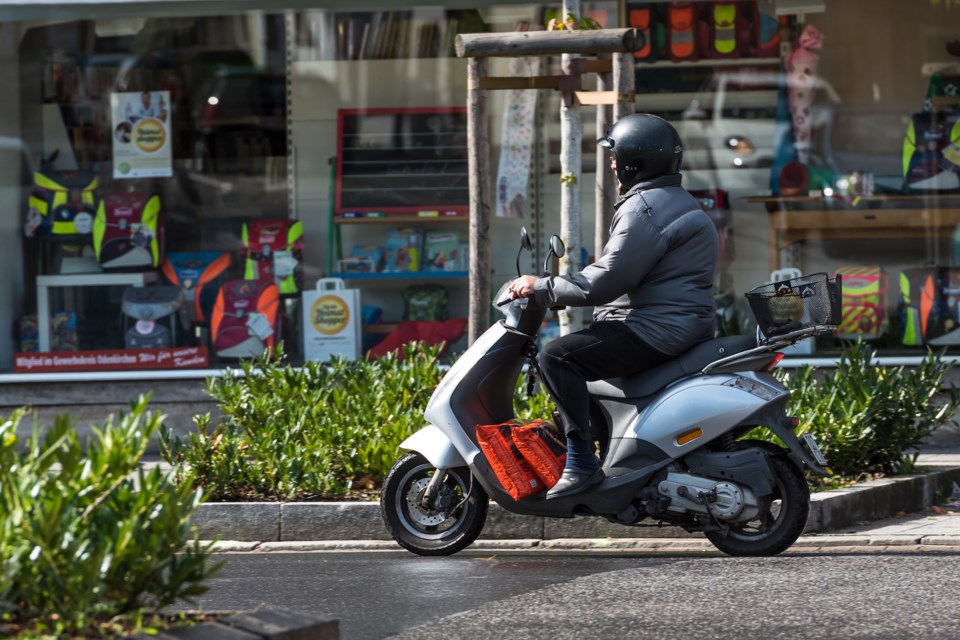NEWS RELEASE
ONTARIO PROVINCIAL POLICE
*************************
The Orillia detachment of the Ontario Provincial Police (OPP) is urging all drivers of e-bikes, mobility devices, mopeds, electric scooters and other alternative forms of transportation, to know the laws before heading out on Ontario roads.
With the emerging popularity of these smaller, more economical forms of transportation, it is vital that users understand the rules and regulations governing their use as well as all safety requirements.
The most common type, the e-bike, is defined under the Highway Traffic Act and the Motor Vehicle Safety Act Regulations as a power-assisted bicycle. Vehicles in this category must:
- Weigh 120kg or under
- Have a label affixed by the manufacturer that the vehicle complies with these regulations.
- Have steering handlebars
- Be fitted at all times with pedals that are operable to propel the bicycle.
- Be designed to travel on no more than 3 wheels in contact with the ground.
- Not be capable of providing further assistance when the bicycle attains a speed of 32 km/hr.
In order to operate an e-bike on a roadway, the following applies:
- Operator and passengers must be 16 years of age or older
- Operator and passengers must wear a helmet (may be a bicycle or motorcycle helmet)
- May carry a passenger if the e-bike is equipped with a seat and foot pedals.
- Does not require Driver's license, permit, license plate or insurance.
- Operator must follow all rules of the road that apply to any vehicle or bicycle.
Many of these conveyances are similar in appearance and it may not be immediately obvious which category they fall under.
What are the basic differences between an e-bike, a moped, and a motor scooter and where they are to be ridden?
E-bikes (and e-scooters) and mopeds are equipped with pedals and a form of power assistance (an electric or gasoline-fuelled motor). E-bikes/e-scooters (which can be equipped with two or three wheels) can be ridden on municipal roads (where permitted) but not provincial highways - similar to the Highway Traffic Act (HTA) governing bicycles - and they must be equipped with safety devices accordingly (e.g. bell; white front light; red rear light).
A moped is considered a motor vehicle as defined by the HTA. Drivers and vehicles must both be licensed.
A motor scooter is not equipped with pedals, has a gasoline- or electric-powered engine, and is considered a motorcycle as defined by the HTA. Drivers and vehicles must both be licensed.
E-bikes/e-scooters, mopeds, and motor scooters are not permitted on controlled access highways in Ontario (i.e. 400-series, Hwys 69, 6, 24, 35, 58 and others…see O.Reg. 630).
Operators of e-bikes/e-scooters do not require an Ontario driver's licence, a license plate, or vehicle insurance.
Before purchasing/operating a new type of vehicle, OPP recommends researching requirements for equipment and licensing under the Highway Traffic Act in Ontario and permitted uses in the municipality in which you intend to operate it.
The Orillia OPP would like to thank everyone who share the responsibility of keeping our roads, trails and waterways safe by reporting impaired drivers. We are committed to serving our province by protecting its citizens, upholding the law and preserving public safety.
*************************



